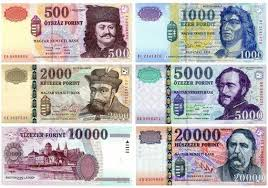This week we are in Central Europe and the country of Hungary, which is a landlocked country, the capital is Budapest with the Danube River running through it almost cutting the country in half.
It is bordered by Slovakia to the north, Ukraine to the
northeast, Romania to the east and southeast, Serbia to the south, Croatia and
Slovenia to the southwest, and Austria to the west.
It is believed the Hungarians migrated from Asia over a thousand
years ago, how they know this is something I don’t understand.
Its cityscape is studded with architectural landmarks from
Buda’s medieval Castle Hill and grand neoclassical buildings along Pest’s
Andrássy Avenue to the 19th-century Chain Bridge. Turkish and Roman influence
on Hungarian culture includes the popularity of mineral spas, including at
thermal Lake Hévíz.
The population is around 10 million, it is an area of around 93,340sq/km,
and the official language is Hungarian.
The national flag of Hungary is a horizontal tricolour of red,
white and green. In this exact form, it has been the official flag of Hungary
since 23 May 1957. The flag's form originates from national republican
movements of the 18th and 19th centuries, while its colours are from the Middle
Ages.
The coat of arms of Hungary was adopted on 11 July 1990, after
the end of communist rule. The arms have been used before, both with and
without the Holy Crown of Hungary, sometimes as part of a larger, more complex
coat of arms, and its elements date back to the Middle Ages.
The forint is the currency of Hungary. It was formerly divided
into 100 fillér, but fillér coins are no longer in circulation. The
introduction of the forint on 1 August 1946 was a crucial step in the
post-World War II stabilisation of the Hungarian economy, and the currency
remained relatively stable until the 1980s.
The politics of Hungary takes place in a framework of a
parliamentary representative democratic republic. The prime minister is the
head of government of a pluriform multi-party system, while the president is
the head of state and holds a largely ceremonial position.
Hungary's national symbol appears to be an eagle or falcon of some kind, but it's actually an entirely fictional mythical bird known as a “Turul”. The Turul comes from an ancient Hungarian legend.
The national flower is the Tulip, but they are the largest producer of the tulip in the world.










It's fascinating to learn about Hungary's rich history and culture. I liked that bit about the Turul.
ReplyDeleteI am enjoying learning a little about different countries
DeleteDid know the country was the largest in growing tulips.
ReplyDeleteI didn't know that for some reason I thought it was The Netherlands who grew the most tulips
DeleteOne of my good friends came from Hungary. Oh the stories she tells!
ReplyDeleteThat's cool
DeleteMost tulips? Imaginary bird the national symbol? Those were a surprise. Very interesting! :)
ReplyDeleteA surprise to me too
DeleteI never knew about the tulips grown in Hungary, Jo-Anne. I always thought that the Netherlands produced the most. Blessings!
ReplyDeleteSo did I
DeleteMy favorite flower is the tulip!
ReplyDeleteThey are pretty
DeleteThanks for sharing. We visited Budapest some years ago and enjoyed it.
ReplyDeleteYou're welcome
DeleteI am going to have to look into this mythical Turul...
ReplyDelete